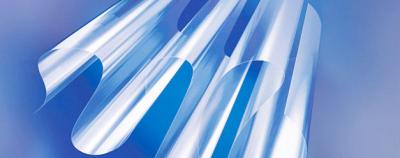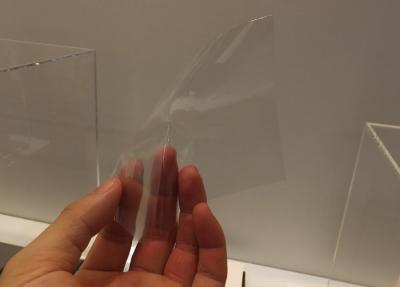The German Federal Ministry of Education and Research (BMBF) is launching a new project called KONFECT that aims to develop flexible OLED glass for OLED applications. BMBF is awarded €5.6 million towards the three-year project that seeks to refine windable glass through lamination with functional adhesive tapes and by applying special functional layers.

The project consortium includes three partners - Schott, tesa and VON ARDENNE. Schott and tesa will develop reliable encapsulation by combining Schott's flexible glass with tesa's barrier tape while Von Ardenne will developing a vacuum coating system specifically for roll-to-roll (R2R) coating of flexible glasses.
Most flexible OLED panels in the future are likely to adopt a plastic substrate as it is cheaper and much more durable than glass. Glass however is a better barrier and can withstand higher temperatures - which means that it is still attractive for OLED applications. In 2013 Corning estimated that flexible glass based OLEDs won't hit the market before 2016.
In early 2013 Nanomarkets released a bullish estimate on flexible glass, stating that we'll see it adopted in the OLED industry before the end of 2013 (which did not happen yet, mind) - and that flexible glass for OLED applications will generate $280 million in revenue by 2020.
Schott's flexible glass is ultra-thin - and can be made in thicknesses of between 25 and 100 μm. It is available as cut-to-size sheets or on a roll.
Last year Von Ardenne helped Fraunhofer's COMEDD to develop flexible OLED lighting panels on flexible glass. The G-Leaf glass was supplied by Nippon Electric Glass. The G-Leaf glass is less than 35 um thick and can be used in roll-to-roll processes. NEG's glass feels like a plastic film and does not break even when crumpled.

Corning has their own flexible OLED product, called Willow glass (unveiled back in 2012). Will glass is an ultra-slim (50 um and 100 um) flexible glass that can support backplanes and color filters in both LCD and OLED panels. Willow glass can withstand temperatures up to 500 degrees Celsius, and can be used in roll-to-roll production processes. In September 2013 we discussed Corning's glass technology for the OLED market with two company executives.
In late 2012, ITRI announced it has developed a full roll-to-roll process on 100 um flexible glass substrates - using Corning's Willow glass. Last month OLEDWorks signed a collaborative agreement with Corning to develop flexible and conformable OLED lighting solutions using Willow glass as an integrated substrate and barrier.

